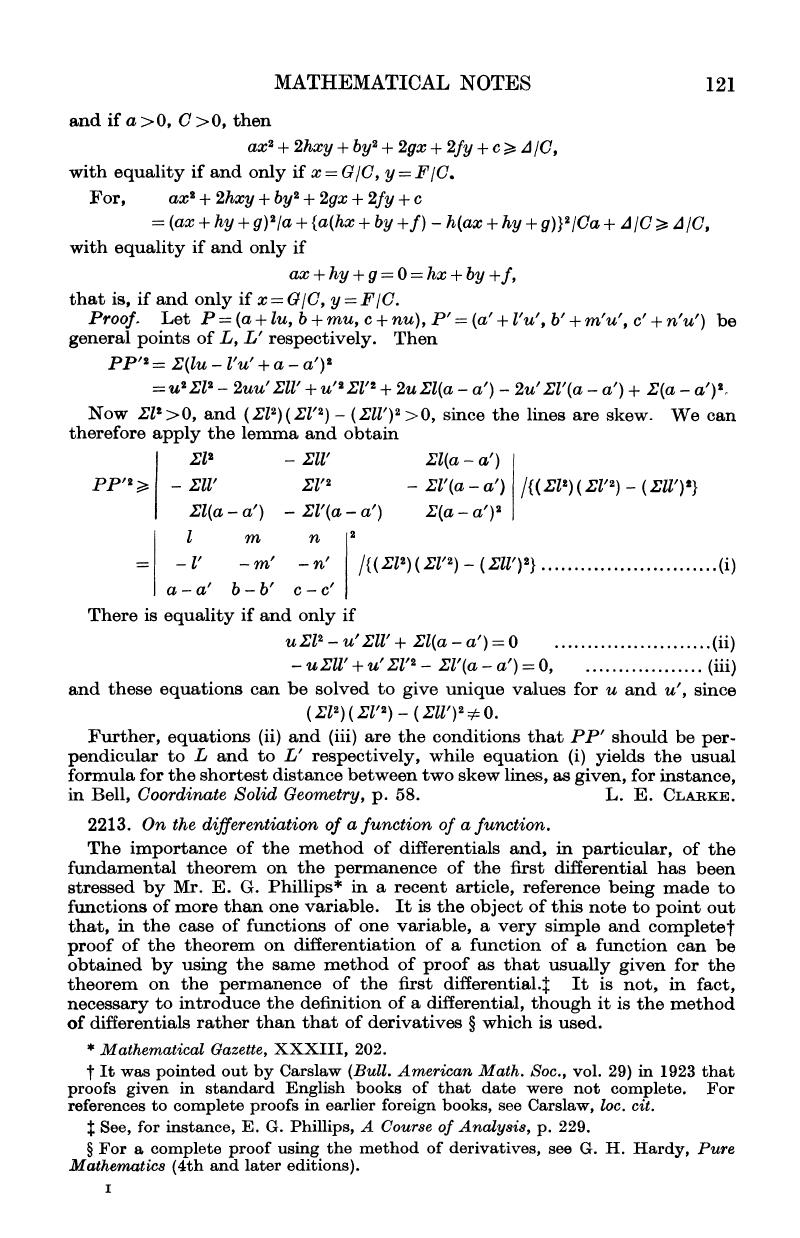No CrossRef data available.
Article contents
2213. On the differentiation of a function of a function
Published online by Cambridge University Press: 03 November 2016
Abstract

- Type
- Mathematical Notes
- Information
- Copyright
- Copyright © The Mathematical Association 1951
References
* Mathematical Gazette, XXXIII, 202.
† It was pointed out by Carslaw (Bull. American Math. Soc., vol. 29) in 1923 that proofs given in standard English books of that date were not complete. For references to complete proofs in earlier foreign books, see Carslaw, loc. cit.
‡ See, for instance, Phillips, E. G., A Course of Analysis, p. 229.Google Scholar
§ For a complete proof using the method of derivatives, see G. H. Hardy, Pure Mathematics (4th and later editions).
* The notation used is that found in Phillips, A Course of Analysis. The proof is essentially the same as that given in Verblunsky, Functions of a Real Variable, p. 64, but the difference in notation brings out the analogy with the proof of the theorem on the permanence of the first differential. For similar proofs, see also Chaundy, The Differential Calculus, p. 71 and Gibson, Advanced Calculus, p. 66.
† Cf. Durell and Robson, Elementary Calculus, Vol. 1, Phillips, A Course of Analysis, and Stewart, Advanced Calculus, where it is pointed out that the proof using (3) only holds if this restriction is made.


